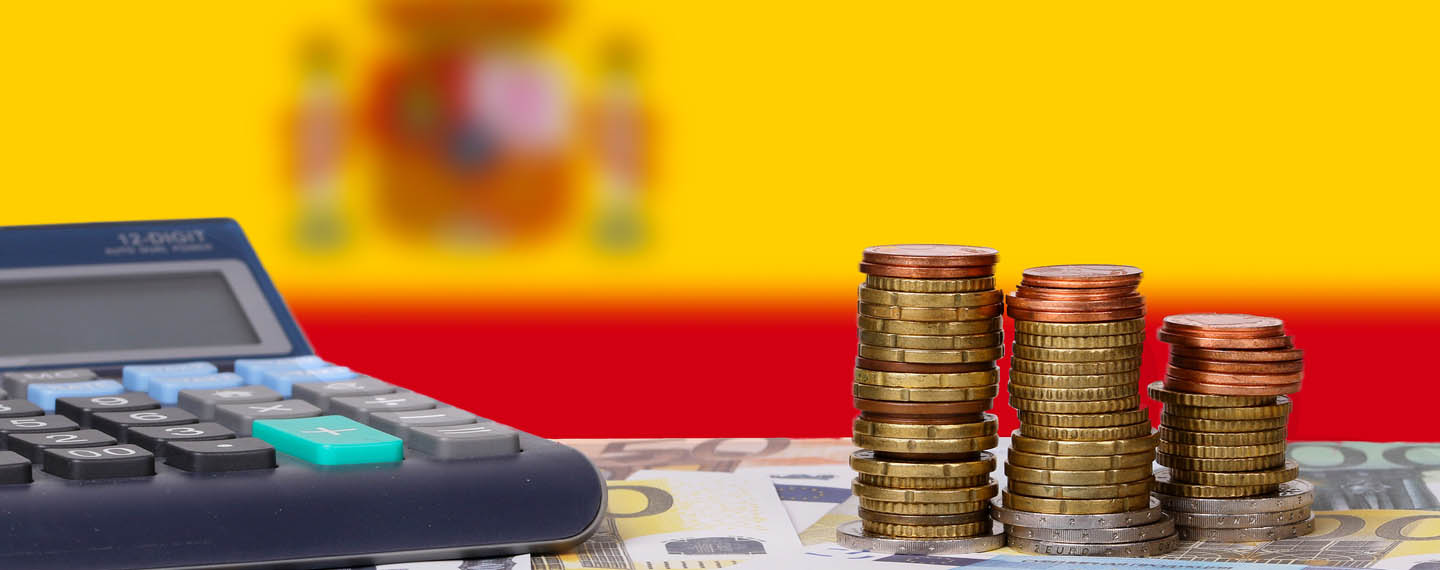Hotels are filling up again with Spaniards and tourists after a bleak period because of COVID-19 related restrictions, some companies are returning to pre-pandemic production levels and unleashed pent-up demand is boosting retail sales.
On the surface, it would seem the Spanish economy, one of the hardest hit by the pandemic (GDP plummeted almost 11% in 2020), is rebounding strongly. Overnight stays in hotels in the key tourism sector (12% of GDP in a normal year) were up 393% year-on-year in the first quarter, at 41.8 million, but were still 22% below the same period of 2019 before the pandemic.
The number of foreign tourists was 9.7 million, up from 1.2 million in the first quarter of 2021, while average spending per tourist in March of €1,257 was higher than before the pandemic.
Tourism will be the main driver of growth. Household consumption is also a major driver. Caixabank estimates the pandemic’s restrictions, which hit consumption, together with income protection policies, mainly the furlough schemes, generated pent-up savings of around €45 billion.
The other driver is the Next Generation EU (NGEU) recovery and resilience programme, whose impact so far is more difficult to gauge. Spain received €19 billion in grants last year and has requested a second tranche of €12 billion. In all, Spain could receive up to €140 billion in grants and loans between 2021 and 2026, the second-largest amount after Italy. Use of this tsunami of funds for projects to make the economy greener and more digital and improve productivity and job creation was somewhat behind schedule in 2021, according to Bank of Spain Governor Pablo Hernández de Cos.
The government’s GDP growth forecast for this year, however, has been sharply cut from an overly optimistic 7% to 4.3% (the European Commission puts it lower at 4%), because of new waves of COVID-19, bottlenecks in global supply chains, soaring energy prices and the impact of Russia’s invasion of Ukraine. Spain will not recover its pre-pandemic GDP level until 2023.
Inflation was running at an annual rate of 8.4% in April, though down from 9.8% in March, and unemployment is still high at over 13%, making Spain the most ‘miserable’ country of the large EU economies (see Figure 1), although in the latest World Happiness Report it ranks just above Italy (and six other EU countries).
Figure 1. Misery Index (1)
| Seasonally adjusted unemployment rate (2) | Inflation rate (3) | Total | |
|---|---|---|---|
| Spain | 13.5 | 8.3 | 21.8 |
| Italy | 8.3 | 6.6 | 14.9 |
| EU-27 | 6.2 | 7.5 | 13.7 |
| France | 7.4 | 5.4 | 12.8 |
| Germany | 2.9 | 7.8 | 10.7 |
(1) The sum of the unemployment and inflation rates; the lower the number the better.
(2) March 2022.
(3) April 2022.
Spaniards, perhaps, can take comfort from the fact that although unemployment is much lower in the UK, for example, at below 4%, inflation is not much higher in Spain, and the country does not face the spectre of stagflation (very low or negative growth and high inflation) as the economy is still growing.
Motorists are receiving some relief in the form of a €0.20 discount for every litre of petrol bought, with the government paying €0.15 and the petrol companies €0.05.
Electricity consumers are also benefiting from the so called ‘Iberian Exception’ allowing Spain and Portugal to cap prices. The agreement with the European Commission in March enables the creation of a temporary mechanism that will cap the price of gas to an average of €50 per megawatt-hour, which should result in electricity bills being halved for about 40% of Spanish and Portuguese consumers with regulated rates.
Madrid and Lisbon successfully argued for the cap because the Iberian Peninsula has a low interconnection with the rest of the EU. The two countries also have a very low dependence on Russian gas as well as high renewable generation produced at near-zero variable cost. In January, according to the Spanish Corporation of Strategic Reserves of Oil Products (Cores), Russian oil accounted 2% of Spain’s oil imports and 6% of gas imports.
Around 1.8 million workers have also benefited from the rise in the legal minimum monthly wage to €1,000 from €965 in 2021 (14 payments). The Socialist government has increased this wage 31% since 2018 (see Figure 2).
Figure 2. Monthly minimum wages, 2018 and 2022 (1)
| 2018 | 2022 | |
|---|---|---|
| 2018 | 2022 | |
| France | 1,498 | 1,683 |
| Germany | 1,506 | 1,621 |
| Luxembourg | 1,998 | 2,256 |
| Poland | 502 | 654 |
| Spain | 858 | 1,125 |
(1) Twenty-one out of 27 EU countries have a national minimum wage.
Employment is picking up, though the jobless rate remains high. It will not be in single figures (9.6%) until 2025, according to the government’s latest Stability Plan presented to Brussels last month (see Figure 3). The last time the rate dropped below 10% was in 2008 at the height of the credit-fuelled real-estate boom, which spectacularly bust during the global financial crisis.
Figure 3. Macroeconomic forecasts, 2021-25 (annual change, %)
| 2021 | 2022 | 2023 | 2024 | 2025 | |
|---|---|---|---|---|---|
| Real GDP growth | 5.1 | 4.3 | 3.5 | 2.4 | 1.8 |
| Exports of goods & services | 14.7 | 7.8 | 6.2 | 6.3 | 4.4 |
| Imports of goods and services | 13.9 | 9.1 | 6.5 | 4.7 | 3.4 |
| Unemployment rate (%) | 14.8 | 12.8 | 11.7 | 10.6 | 9.6 |
| Fiscal deficit (% of GDP) | 6.8 | 5.0 | 3.9 | 3.3 | 2.9 |
| Public debt (% of GDP) | 118.4 | 115.2 | 112.4 | 110.9 | 109.7 |
The number of people registered as unemployed in the government’s INEM offices, as opposed to those calculated by a quarterly survey of households, was just over 3 million in April, the lowest figure for that month since 2008. Job quality is improving: almost 700,000 people were hired on permanent contracts in April, the highest monthly number since the series began in 2001. For the fourth consecutive month, the proportion of people taken on with permanent contracts (48.2% of the total) increased (15% in January, 22% in February and 31% in March). Some 60% of April’s permanent hirings were with part-time or fixed continuous contracts (for work at a certain time of the year, but when the work is finished the contract is not terminated as these workers can be called again). The number of Social Security contributors surpassed 20 million for the first time.
The government was quick to trumpet the success of its labour-market reforms approved last December which limit the use of precarious temporary contracts. But it is too early to tell. Spain’s temporary employment rate of 25% is well above the EU average (see Figure 4).
Figure 4. Temporary employees (% of employees), 2012 and 2021
| 2012 | 2021 | |
|---|---|---|
| France | 15.6 | 15.6 |
| Germany | 13.8 | 11.5 |
| Italy | 13.8 | 16.6 |
| Spain | 23.9 | 24.9 |
| EU-27 | 15.0 | 14.1 |
Spain has the peculiarity of high unemployment and worker shortages, particularly in the construction sector. Some 1.8 million jobs were lost after the housing crash and now an estimated 500,000 construction workers are needed. Those who lost their jobs more than a decade ago found work in the then booming tourism industry. They seem reluctant to move back, perhaps because of bad memories of the crisis, or they are too old to do so.
Employers, unions and the government are running free courses for builders. Many of those who have signed up are migrants from Africa and Latin America and not Spaniards. Some projects eligible for NGEU funds could be stymied by the lack of workers.
Now that Spain is over the hump of the pandemic and the recovery is taking root, the government needs to focus on the long-term challenges. The fiscal deficit has been below 3% of GDP (the EU rule suspended in 2020 until 2023) only once since 2012 (see Figure 5). There is no room to cut taxes, as the Popular Party (PP) is demanding. Public debt almost doubled between 2010 and 2021 to 118.4% of GDP (see Figure 6).
Higher interest rates on new debt, because of tighter monetary policies, will push up the financial cost by €20 billion between 2022 and 2025, according to the Independent Authority for Fiscal Responsibility (AIREF). The structural deficit (net of the cyclical component and one-off and other temporary measures) could reach 6% of GDP, higher than before the pandemic.
Figure 5. Fiscal balance (% of GDP), 2012-21
| 2012 | 2013 | 2014 | 2015 | 2018 | 2019 | 2020 | 20121 | |
|---|---|---|---|---|---|---|---|---|
| France | -5.0 | -4.1 | -3.9 | -3.9 | -2.3 | -3.1 | -8.9 | -6.5 |
| Germany | 0.0 | 0.0 | 0.6 | +1.0 | +1.9 | +1.5 | -4.3 | -3.7 |
| Spain | -11.6 | -7.5 | -6.1 | -5.3 | -2.6 | -3.1 | -10.3 | -6.9 |
| Italy | -2.9 | -2.9 | -3.0 | -2.6 | -2.2 | -1.5 | -9.6 | -7.2 |
| EU-27 | -3.7 | -3.0 | -2.4 | -1.9 | -0.4 | -0.6 | -6.8 | -4.7 |
Figure 6. Public debt (% of GDP), 2010-21
| 2010 | 2012 | 2014 | 2016 | 2018 | 2019 | 2020 | 2021 | |
|---|---|---|---|---|---|---|---|---|
| France | 85.3 | 90.6 | 94.9 | 98.0 | 97.8 | 97.4 | 114.6 | 112.9 |
| Germany | 82.0 | 80.7 | 75.3 | 69.0 | 61.2 | 58.9 | 68.7 | 69.3 |
| Spain | 60.5 | 90.0 | 105.1 | 102.8 | 100.5 | 98.3 | 120.0 | 118.4 |
| Italy | 119.2 | 126.5 | 135.4 | 134.8 | 134.4 | 134.1 | 155.3 | 150.8 |
| EU-27 | 80.4 | 85.0 | 86.8 | 84.2 | 79.6 | 77.5 | 90.0 | 88.1 |
Reducing the fiscal deficit and public debt would be best tackled by a multi-year consolidation plan, but this would need the wide political support that is so woefully lacking in many other areas because of the polarised and fragmented political class.
Image: Calculator with money and coins in front of flag of Spain. Photo: Jernej Furman (CC BY 2.0).



